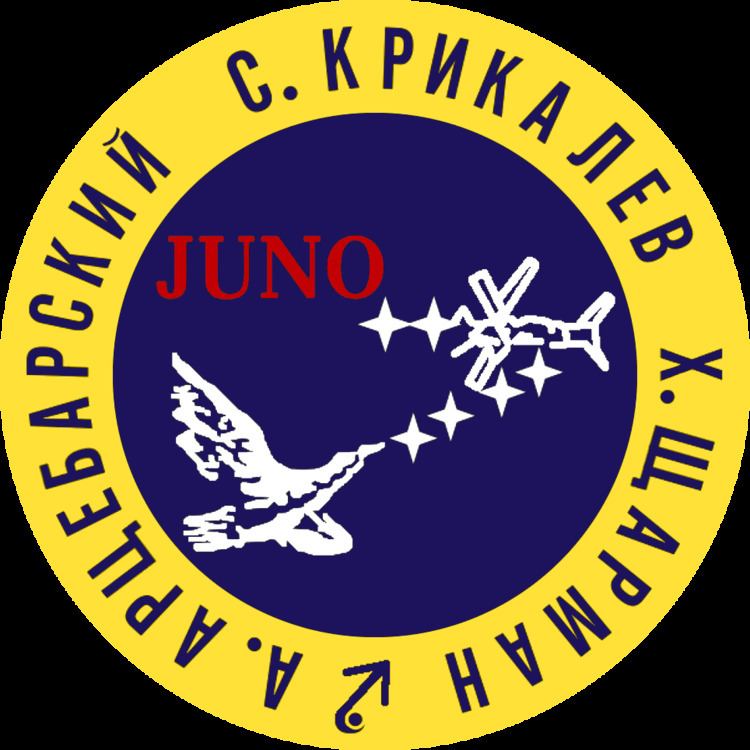 | ||
Project Juno was a private British space programme which selected Helen Sharman to be the first Briton in space.
As the United Kingdom did not have a human spaceflight programme (until Tim Peake's ESA mission in 2015), a private consortium was formed to raise money to pay the Soviet Union for a seat on a Soyuz mission to the Mir space station. The Soviet Union had recently flown Toyohiro Akiyama, a Japanese journalist, under a similar arrangement.
A call for applicants was publicized in the UK (one ad read "Astronaut wanted. No experience necessary"), leading to 13,000 applications. Juno selected four candidates to train in the Soviet Union:
Eventually Mace and Sharman were selected to continue full-time training at Star City. After learning Russian and familiarising themselves with the science programme, Smith and Brooks were employed to teach the other two how to perform the experiments and then to conduct them in a life sized mock up of Mir for live media during the mission.
The cost of the flight was to be funded by various innovative schemes, including sponsoring by private British companies and a lottery system. Corporate sponsors included British Aerospace, Memorex, and Interflora, and television rights were sold to ITV.
Ultimately the Juno consortium failed to raise the entire sum, and the Soviet Union considered cancelling the mission. However Mikhail Gorbachev directed the mission to proceed at Soviet cost. The ambitious microgravity experiments originally planned were dropped when time ran out for sending required equipment on an automated 'Progress' flight. Helen did perform experiments designed by British schools that could be done with existing equipment aboard Mir along with a British microbiology screening investigation taken over by the Russians.
Sharman was launched aboard Soyuz TM-12 on 18 May 1991, and returned aboard Soyuz TM-11 on 26 May 1991.
Both Sharman and Mace were candidates but not selected in the 1992 and 1998 European Space Agency selection rounds for its astronaut corps. Brooks was also put forward for the European Astronaut Corps in 1982, but dropped out when employed on AI systems elsewhere. Mace did not fly in space, but married the daughter of cosmonaut Vitali Zholobov. He later was the helicopter pilot for President of South Africa Nelson Mandela. He died in September 2014 from cancer.
